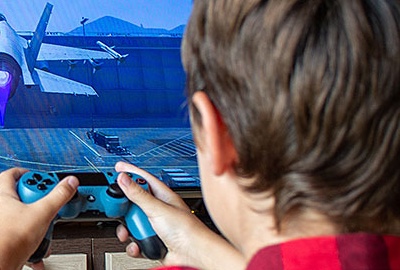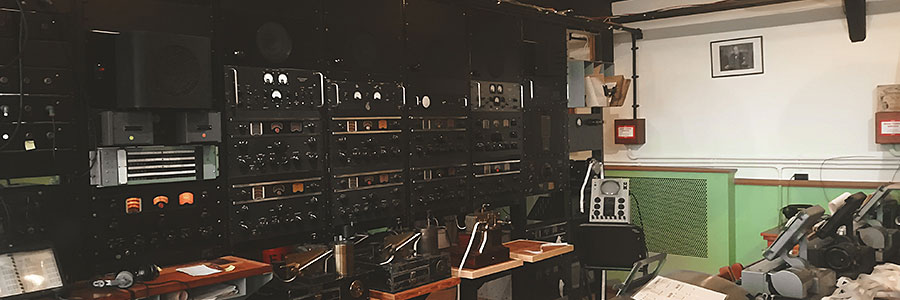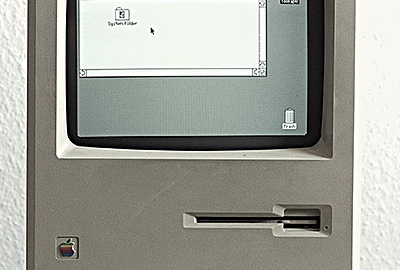 2022-05-09
2022-05-09
-
Home /
-
Technology /
-
History of the Computer

History of the Computer
- ArticlesandContent.com (CIRCA 2005)
- /
- Oct 8, 2021 (written 2005)
Most of us couldn’t imagine life today without computers. They are an integral part of nearly every technological advance we enjoy, from our familiar desktop models to the computers that keep our cars running, and even the computers that power lifesaving hospital equipment.
The history of the computer is a fascinating story that few are aware of, even as they sit down in front of their personal descendents of the first computer. Do you know who invented the computer? How about the history of the computer in its earliest days? Computers weren’t always the blazing fast machines enabling us to retrieve a mountain of knowledge at our fingertips. In fact, the first computer was very different from the computers of today.
Inventor Charles Babbage did not invent the computer. However, he was the first to conceptualize and actually design a model that would be fully programmable and functioning, way back in 1837—if only he’d had the time, the finances and the resources to complete it. Unfortunately, Babbage could not complete construction of his design in his lifetime, and so the would-be first computer walked the doom path that many computer-related engineering projects still follow today: inadequate funds and lack of time.
So, who invented the computer? The machine that is widely considered to be the predecessor of modern computers was known as ENIAC: Electronic Numerical Integrator And Computer. ENIAC was developed by the United States Army during World War II, with the purpose of calculating ballistic firing tables. No single person can claim credit for the invention and development of ENIAC; like most computer projects, it was a team effort. However, two of the key people behind ENIAC’s creation were University of Pennsylvania professors J. Presper Eckert and John William Mauchley.
There has been quite a bit of debate over whether ENIAC truly was the first computer. Many consider the Atanasoff Berry Computer (ABC) to be the true first computer, as its development preceded that of ENIAC; and indeed, Mauchley utilized some of the ideas behind it to develop ENIAC. The Atanasoff Berry Computer was constructed at Iowa State University during the period from 1937 to 1942, by Dr. John Vincent Atanasoff and Clifford E. Berry. This computer was the first to separate computation and memory (processing and storage, in modern computers); use binary digits to represent all data; and perform every calculation using electronics rather than wheels and ratchets. The ABC used punch cards to input data rather than the keyboards we know today; and it stored data in memory drums. Electronic operation was achieved through the use of vacuum tubes.
1943 saw the commissioned beginning of the ENIAC project, and the first machine was unveiled on February 14, 1946. This was an important date in the history of the computer, as it was the first time a working computer was announced to the public. The total cost of the ENIAC project was around $500,000. The final product made headlines because of its sheer size: ENIAC took up an entire room and weighed in at nearly 30 tons. The components involved in the construction of ENIAC were also impressively immense—17,468 vacuum tubes, 70,000 resistors, 10,000 capacitors, 1,500 relays and 7,200 crystal diodes made the monstrous computer tick. Like the ABC, ENIAC received input through punch cards, and did not have the means to store programs.
However, the machine did suit its purposes—when it worked. Because of the sensitivity of the vacuum tubes to heat, during its initial operation the ENIAC was down 50 percent of the time due to blown vacuum tubes, which occurred at a rate of several tubes per day. Those of us who use modern computers cannot conceive of the hassle of owning a computer that only worked half the time! However, ENIAC’s users soon discovered that by keeping the computer running constantly, the intense heat that occurred during boot-up and shut-down was prevented, and soon lowered the rate of vacuum tube blow-out to one every two days. Could you imagine the price of ENIAC’s electric bill?
The day-to-day operation of ENIAC was carried out, surprisingly enough, by women—an almost unheard-of circumstance in the 1940’s. Six women were responsible for the bulk of ENIAC’s programming: Jean Jennings Bartik, Frances Snyder Holberton, Ruth Lichterman Teitelbaum, Frances Bilas Spence, Marlyn Wescoff Meltzer, and Kathleen McNulty Mauchly Antonelli. These six super-women were inducted into the Women in Technology International Hall of Fame in 1997 to commemorate their contribution to the history of the computer.
Several improvements to ENIAC were made over the years, and the machine remained in operation until 1955. However, the room-sized computer design was never repeated, and the next step in the history of the computer came with EDSAC (Electronic Delay Storage Automatic Calculator), which more closely resembled today’s computers—in operation, at least. The EDSAC, a British invention developed by Maurice Wilkes and his team at the University of Cambridge, actually resembled a series of oversized metal abacus (lacking, of course, the moveable components). The EDSAC was the first practical computer, allowing for storage capability and the use of program applications to carry out different operations. Similar to ENIAC, the EDSAC made use of vacuum tubes, but used punched tape instead of punch cards for input purposes. It also used mercury delay lines for memory, an improvement over ENIAC.
The UNIVAC computer
The UNIVAC computer was created after much trial, error, and near bankruptcy by John Mauchly and Presper Eckert, and was one of the first commercially used computers. The history of computer technology took a big leap forward when the United States Census Bureau, followed by many other government agencies and private businesses, began using using the UNIVAC to help with their operations. Large and cumbersome, the Univac took up an entire room, but in the history of computer technology it was heralded as a machine that positively changed the way many companies and government agencies were able to do business.
Business computers were well on their way to becoming a staple in society, with improvements happening at a rapid pace, but the history of personal computer use was just beginning. Though people marveled at these new machines that businesses used to increase their productivity and potential at astounding rates, nobody gave much thought to the fact that computers could ever be used in the home. Nobody, that is, except the innovative thinkers who knew that the history of computer evolution was only in its infancy. Those people who could truly see in the history of computer technology the potential for further growth realized that eventually computers would be small enough and efficient enough to be able to become a home device. These people not only believed it, they set about trying to make it a reality.
Smaller business computers were being developed as time went on, and many people who worked in the computer manufacturing business were starting to want their own personal computers with which to experiment. In 1972, a man named Ed Roberts was running a rapidly failing business in New Mexico, where he sold electronic device assembly kits. Roberts was desperate to save his failing business, so he decided to take a risk and attempt to develop the first home computer kit. With determination and hard work, Roberts developed a home computer assembly kit that he called the Altair, and once the Altair was advertised it practically became an overnight sensation. There were so many orders for the kit that Roberts' company went from almost bankrupt to highly successful almost immediately. There were two computer programmers who were especially interested in the Altair, and they contacted Roberts, telling him that they wanted to develop software programs for the computer. These programmers' names were Paul Allen and Bill Gates. The software programs worked, and the beginning of the Microsoft Corporation took its place in the history of computer evolution.
The personal computer
The personal computer soon moved from a kit to a completed device, and once personal computers started showing up in some homes, their popularity increased. Like a domino effect, the more that people bought personal computers, the more others wanted one and bought one too. Manufacturers and technicians worked hard to keep up with the growing demand for more and better personal computers and computer software. With the introduction of the Internet to home computer use, there was no doubt that personal computers were becoming a mainstay in society.
Today there are few people who could even imagine what life would be like without their personal computer. In truth, business computers and personal computers are pretty much the same thing now – it is the software and networking that differs from computer to computer. Today's computers are thousands of time faster, more efficient, and more capable than the first computers. With the help of the Internet, people can use their personal computers to converse, instantly, with others anywhere in the world. Most businesses could no longer function without the computer – in fact, some businesses are run exclusively through the Internet. Computers act as accountants, researchers, televisions, radios, video players, and telephones. Financial transactions occur over computers in the millions each day. Any game you can think of can be played on the computer. The history of computer technology is an ongoing process, with the goal being that one day there will be a computer that has the same reasoning capabilities as the human brain.
Computer technology is a fascinating field, made even more so by the fact that there seems to be no end to what we can achieve with computers. Computer history and development go hand in hand. With the rapid advancement of computer technology, today's developments become old history in as little as two or three years. Where the technology will go from here is limited only by the human imagination.
Perhaps no one can say with certainty who invented the computer. However, the history of the computer is an interesting look at the ingenuity of humans in our pursuit of knowledge. Whether we consider the ABC, the ENIAC, or the EDSAC the great-grandfathers of the machines that now grace desktops and homes around the world, we know that many people contributed the ideas, the research, the technology and the inspiration to forge one of humanity’s greatest inventions: the computer. Where would we be today without it? Though it’s doubtful that we would be scratching calculations in the mud with sharp sticks, our global community is certainly a more exciting place to live thanks to the pioneers who developed the very first computers.




